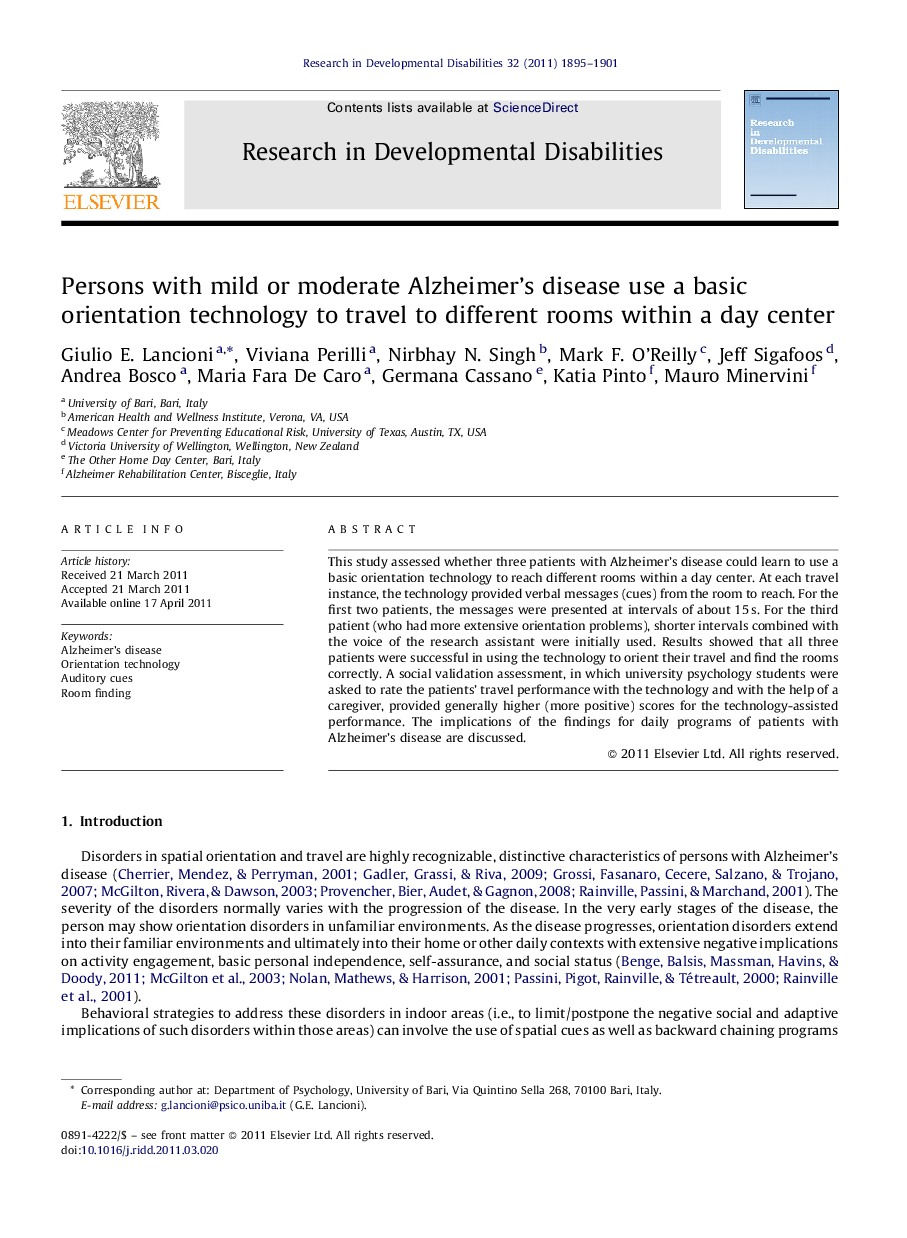| Article ID | Journal | Published Year | Pages | File Type |
|---|---|---|---|---|
| 371725 | Research in Developmental Disabilities | 2011 | 7 Pages |
This study assessed whether three patients with Alzheimer's disease could learn to use a basic orientation technology to reach different rooms within a day center. At each travel instance, the technology provided verbal messages (cues) from the room to reach. For the first two patients, the messages were presented at intervals of about 15 s. For the third patient (who had more extensive orientation problems), shorter intervals combined with the voice of the research assistant were initially used. Results showed that all three patients were successful in using the technology to orient their travel and find the rooms correctly. A social validation assessment, in which university psychology students were asked to rate the patients’ travel performance with the technology and with the help of a caregiver, provided generally higher (more positive) scores for the technology-assisted performance. The implications of the findings for daily programs of patients with Alzheimer's disease are discussed.
► Orientation technology allowed patients with Alzheimer's disease to travel in their day center. ► Auditory cues consisted of short sentences emitted by sound sources available at the destinations. ► Auditory cues were emitted at intervals of about 15 s and encouraged the patient to walk to the destinations.
